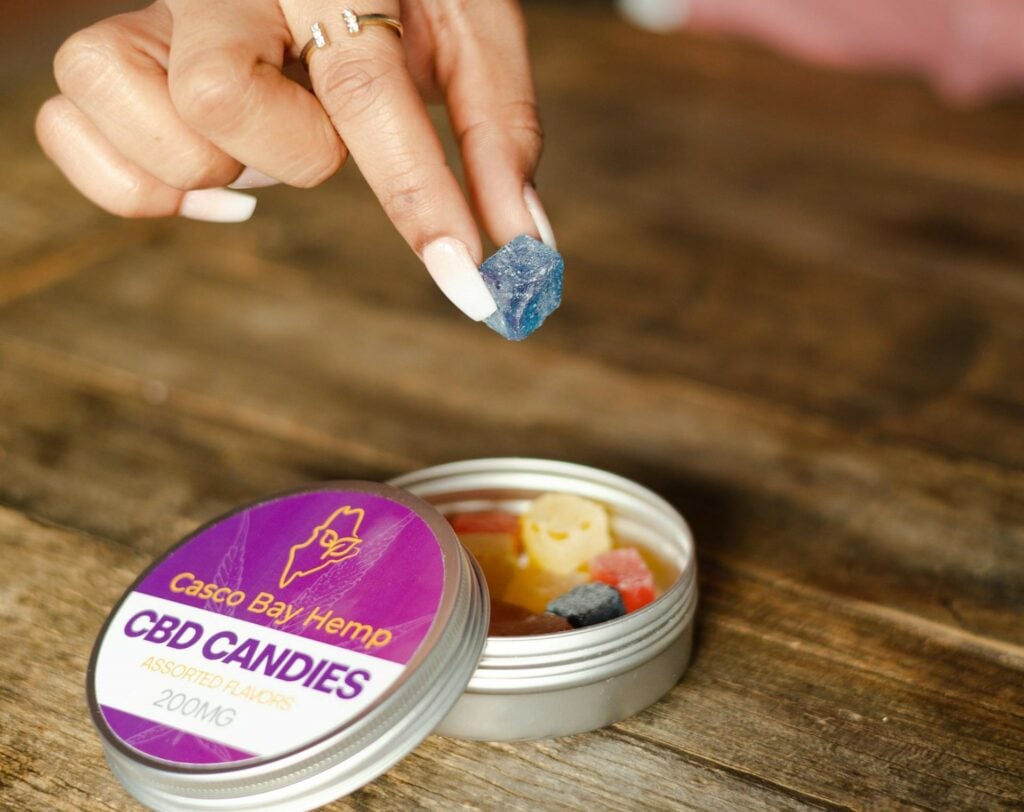Cannabis use is expanding beyond conventional recreational and adult use as more research highlights its potential for various medical conditions. One area where it shows promise is in treating epilepsy, a neurological condition that causes recurring seizures. Epilepsy affects about 1-2% of children, and while some types work with medications, other forms have responded well to cannabidiol (CBD) treatments.
Parents seeking a product with extended relief, gentler, and more accessible options for their child’s epilepsy management can find CBD edibles online. These products offer an easy way to incorporate cannabis into their child’s routine without the challenges of traditional treatments.
Table of Contents
- Key Takeaways:
- Cannabinoid Medication for Childhood Epilepsy
- How Do Cannabis Edibles Help in Seizures Management
- What is The Correct and Safe Dosage When Using Marijuana Edibles
- Best Canada Edibles Online
- Integrate the Use of CBD Edible With a Suitable Dietary Routine
- Possible Side Effects of CBD Edibles
- Embrace a Supportive Environment for Using Edible
- Wrapping Up
- Frequently Asked Questions

Key Takeaways:
- Clinical trials show that purified CBD edible products reduce seizure frequency by 36% to 49% in children with DRE.
- The ketogenic diet may enhance weed’s effectiveness in reducing seizures.
- Cannabidiol may result from interactions with other medications like clobazam, particularly in higher doses.
Cannabinoid Medication for Childhood Epilepsy
Early evidence from lab studies, anecdotal reports, and small clinical trials suggest cannabidiol in an edible product may help control seizures. Specific plant-based products can benefit patients who haven’t responded to traditional treatments.
In 2018, the FDA approved Epidiolex, a CBD product, for treating drug-resistant epilepsy (DRE) in people 2 years and older. Although approved in the U.S., Europe, and Australia, it is not yet available in Canada, though it is under approval in late 2022.
Although there is a struggle to access this medication, many Canadian parents are looking for alternative options that are worth the try.
How Do Cannabis Edibles Help in Seizures Management
For children with Drug-Resistant Epilepsy (DRE), clinical trials using purified cannabidiol have consistently shown a reduction in seizure frequency by 36% to 49% and improved quality of life. Long-term studies also support the tolerability and its benefits at doses up to 25 mg/kg per day.
In some studies, children with DRE using CBD-enriched oils experienced seizure reduction. These extracts may require lower doses to achieve similar or better outcomes compared to purified oils. Observational studies have also reported the benefits of extracts for DRE.
| Study/Research | Key Findings |
| Composition and Use of Cannabis Extracts for Childhood Epilepsy in the Australian Community | 26 out of 51 show an average seizure reduction of 75–100%One family reported complete seizure freedom in their child for at least 12 months. |
| Cannabinoids in the Treatment of Epilepsy: Hard Evidence at Last? | Placebo-controlled trials of purified cannabidiol showed it reduced seizure frequency in Dravet and Lennox-Gastaut syndromes.Provided class 1 evidence for CBD’s efficacy as adjunctive therapy. |
| Medical Cannabis for Intractable Epilepsy in Childhood: A Review | Highlighted the effectiveness of Epidiolex® (FDA-approved).Effective for Dravet syndrome and Lennox-Gastaut syndrome. |
What is The Correct and Safe Dosage When Using Marijuana Edibles
First, consider the age and stage of development of your child. Conversations with a healthcare practitioner should include the right dosage based on the child’s weight, age, and severity of condition. Also, evaluate the child’s past treatments and prognosis.
- Consume with a low dose of 0.5 mg daily, divided into two.
- Increase the dose by 0.5 mg/kg every 2 weeks until the desired effect is thoroughly achieved or becomes noticeable.
- Can reach up to 20 mg daily, but higher doses require cautious use.
Cannabinoid oil and cannabis-infused food are given orally for pediatric care.
Your healthcare provider must discuss benefits, set goals, establish dosing, and reassess therapy if adverse events occur.
Best Canada Edibles Online
Aside from the famous Ganja edibles and baked goods, there are many options you can explore online. Make sure you are using products with CBD only when giving to a child. Adults who are not sensitive can take THC edibles to also enjoy the psychoactive effects of THC gummies and other products.
| Product | OneStop – Mango Gummies | OneStop – Açai Berry Gummies | Mikro – Gummies |
| CBD Content | 500mg (10 pieces, 50mg each) | 500mg (10 pieces, 50mg each) | 100mg (20 pieces, 5mg each) |
| Flavour | Mango | Açai Berry | Grape |
Integrate the Use of CBD Edible With a Suitable Dietary Routine
Aside from having a balanced diet, the best way is to do the ketogenic diet. This high-fat, low-carbohydrate diet reduces seizure frequency in some. This diet may enhance the efficacy by promoting ketosis and has anti-seizure effects.
Work with a dietitian experienced in ketogenic therapy to safely implement this diet alongside the therapy. Also, adequate water intake is necessary to prevent dehydration and kidney stones.
Possible Side Effects of CBD Edibles
Of course, consuming cannabinoids from a weed can have side effects. Based on studies, few side effects included tiredness, diarrhea, and upset digestive system.
In cases of DRE, the side reactions of cannabinoids are similar to those of other anticonvulsants. Common short-term side effects include drowsiness, fatigue, decreased appetite, diarrhea, and vomiting.
These may result from interactions with other medications, such as clobazam, though studies haven’t shown significant differences in seizure control between patients on clobazam and those not taking it. Higher doses can increase the likelihood of strong reactions.
Monitor your child closely for any positive or negative effects and report them to their pediatrician for necessary adjustments.
Embrace a Supportive Environment for Using Edible
Your clinician should be open to discussing the potential benefits and risks of medical marijuana, especially when requested. These discussions should be:
- Evidence-based and unbiased to help make informed decisions.
- Focused on the specific condition and prognosis of the child, considering the best available data.
- Clear on the risks of accessing weed through recreational sources.
- Treatment plans must include slow titration, tailored dosing, and regular follow-ups to monitor effectiveness, safety, and any drug interactions.
Wrapping Up
Various studies review the effectiveness of edible cannabis products in managing DRE in children. With the growing use of medical cannabis in Canada, pediatricians must discuss its benefits and risks with families and develop personalized treatment plans. Many families find that adding cannabidiol to their child’s regular treatment improves their quality of life. Check out cheap weed Canada only at GrassLife now!
Frequently Asked Questions
Should a person with DRE consider medical marijuana if other medications fail?
If conventional treatments fail to control seizures, you may consider using this plant-based medication. However, this must only be done after a thorough evaluation at a specialized centre to ensure all other treatments, including FDA-approved medications, dietary therapies, devices, and surgery, have been explored.
It is strongly advised to work closely with your doctor to make the best treatment decisions for your specific situation.
Should I worry about drug interactions when taking an edible?
It’s important to remember that even though cannabis is a plant, the liver processes it, much like many other medications. Few people think it’s completely safe because it’s natural, but interactions with other medications can still occur.
There are known drug interactions with cannabidiol. For example:
- Liver Enzymes: Patients who mixed valproic acid (VPA) have experienced elevated liver enzymes, although VPA levels don’t increase. A byproduct of VPA increases the risk of liver issues.
- Clobazam (Onfi): A breakdown component of clobazam may interact with the cannabinoid, possibly leading to increased tiredness.
What are some hurdles that parents face when they buy edibles?
Parents seeking medical weed face barriers to access and a lack of unbiased information. Many turn to marijuana as a last resort when other treatments have failed. Due to the scarcity of reputable resources, they rely on social media or friends for guidance. Your best choice is to buy edibles online from a reliable source.
Cost is a major concern, as purified cannabidiol and oils can be expensive, particularly in the doses required for seizure control. This can hold a significant financial burden on families already dealing with the costs of managing a child’s chronic illness.
While some insurance providers cover medical weed, coverage comes with restrictions, and some specifically exclude youth.
Some licensed producers offer discounts for pediatric patients. Ensure you purchase from a trusted online source that provides affordable, safe options for your child.
Related Articles:




